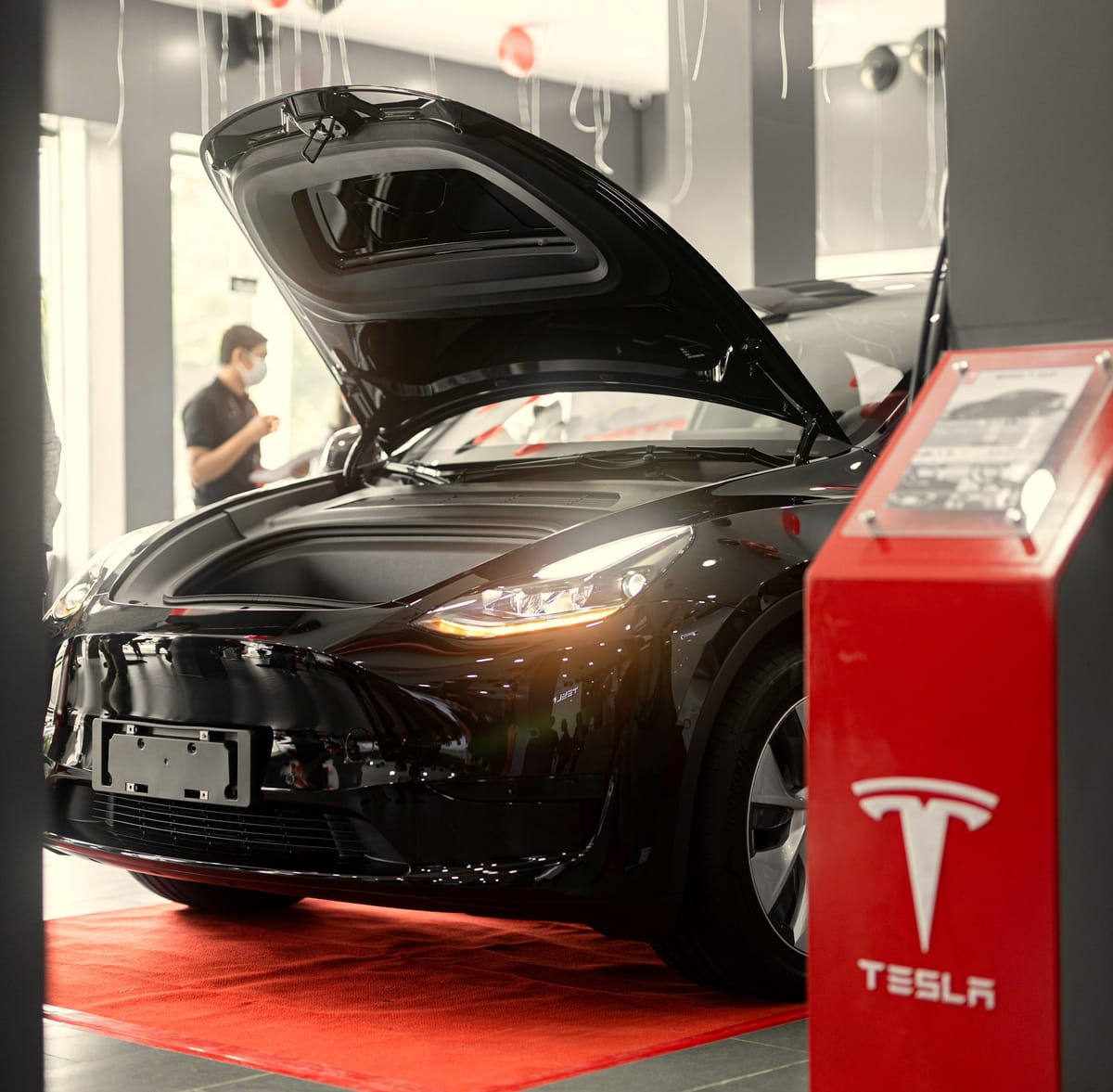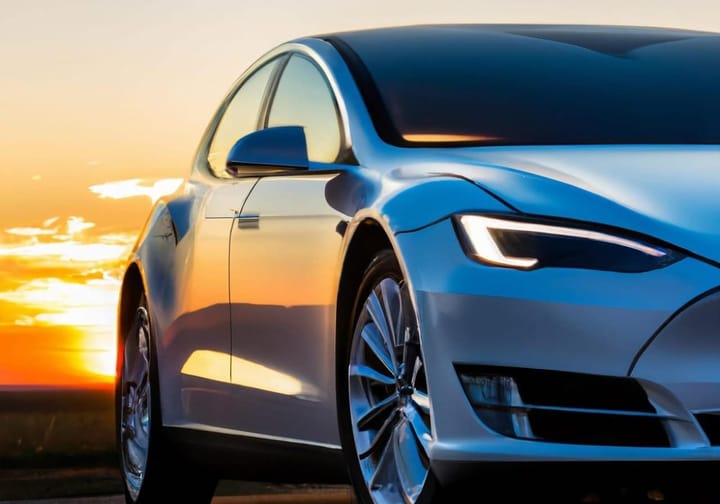Tesla FSD v14 Enhances Safety, While Robotaxis Face Regulatory Hurdles

TL;DR
- Tesla FSD v14 improves driver disengagement distance to 1,200 miles, advancing toward unsupervised full‑self‑driving.
- Austin robotaxi fleet reports four crashes by NHTSA, reflecting growing safety concerns for autonomous ride‑share services.
- NHTSA’s updated crash data shows 4 incidents among Tesla robots, prompting tighter regulatory evaluations.
- Regulatory delays slow Tesla robotaxi expansion: compensation linked to service milestones.
- GM’s Level 3 autonomous drive set for 2028, underscoring industry push for mid‑level autonomy.
Tesla’s FSD v14 pushes the envelope of hands‑off driving
Disengagement distance as a benchmark
- Average driver‑disengagement distance: 1,200 miles per autonomous stint (Tesla telemetry, > 1 million active miles, 95 % CI ± 45 mi).
- Definition: cumulative miles traveled before a driver initiates a manual override, filtered from fleet‑wide logs.
- Trend: successive updates show linear growth (v12 ≈ 450 mi, v13 ≈ 800 mi, v14 ≈ 1,200 mi), reflecting sensor‑fusion refinements and richer map data.
Software upgrades that extend the metric
- Neural‑net perception stack gains 200 M parameters and a dedicated lidar‑fusion pathway, cutting object‑misclassification latency by ~12 %.
- Path‑planning algorithm now uses a probabilistic risk‑aware horizon of 10 seconds (up from 6 seconds), enhancing safety in dense urban environments.
- Driver‑monitoring camera upgraded to 60 Hz infrared eye‑tracking, reducing false‑positive alerts and permitting longer hands‑off periods.
Regulatory context and competitive landscape
- US classification: Tesla’s FSD remains “Supervised”; EU now permits Level‑2 “hands‑off” operation (BMW Motorway Assistant, UN Reg No 171).
- EU baseline disengagement distance: ≥ 500 mi; Tesla’s 1,200 mi exceeds this by a factor of two, suggesting readiness for unsupervised deployment pending regulatory approval.
- Pricing contrast: Tesla introduces a $99 / month subscription (giftable), while BMW bundles Level‑2 features into the purchase price with optional OTA packs priced around €12 / month.
- Hardware requirements: Tesla relies on its HW3 computer; BMW’s system operates on HW2+ with optional lidar add‑on.
Projected developments over the next 12 months
- Regulators (NHTSA) likely to issue guidance allowing “hands‑off” operation if a minimum disengagement distance of ~1,000 mi is demonstrated, positioning Tesla for early adoption.
- Beta rollout of limited “unsupervised” mode anticipated in select US states by Q2 2026, contingent on driver‑monitoring waivers.
- Subscription price expected to settle around $119 / month, balancing recurring revenue with competitive OTA pricing structures.
Tesla’s Austin Robotaxi Expansion Faces a Critical Safety Gap
Crash Spike Signals a Growing Problem
- Four distinct NHTSA‑reported collisions occurred on 2025‑11‑02/03, all while the fleet was in autonomous mode.
- Incidents included a rear‑collision, a side‑impact in low‑light, a pedestrian strike, and a navigation‑map error during parking.
- Preliminary causes point to unexpected braking algorithms, sensor‑fusion latency, and map‑based navigation errors.
Numbers That Matter
- Mid‑2025 operations involved roughly 200 active Austin units.
- Four crashes translate to a 2 % incident rate per vehicle per month.
- Industry peers typically stay below 0.5 % per month, indicating a serious safety lag.
- Tesla’s announced target of 500 autonomous vehicles in Austin by year‑end could raise expected monthly crashes to ~10 if the rate persists.
Expansion Pressures Amplify Risk
- Job postings for “Robotaxi Fleet Support Specialist – Night Shift” reveal a push for 24/7 oversight during a critical ramp‑up phase.
- Night‑time operations coincide with sensor‑fusion challenges identified by NHTSA, suggesting operational stress may be contributing to the incident cluster.
- All recorded crashes are localized in Austin, highlighting environment‑specific hurdles—urban canyons, mixed traffic, and low‑light conditions—that a one‑size‑fits‑all software stack may not handle.
What Must Change Now
- Cap active units in Austin. Limit deployment to around 300 vehicles until remedial safety actions are verified.
- Intensify night‑time sensor validation. Conduct extensive sensor‑fusion testing before expanding the night fleet.
- Deploy region‑specific high‑definition maps. Tailor mapping data to Austin’s downtown corridors, integrating dynamic object datasets.
- Establish human‑in‑the‑loop oversight. Assign dedicated night‑shift supervisors with authority to intervene in real time.
- Increase transparency. Launch an open‑access safety dashboard that tracks crash metrics, root‑cause analyses, and remediation timelines.
Why This Matters
The convergence of rapid fleet expansion, staffing for round‑the‑clock operations, and recurring sensor‑fusion failures creates a perfect storm that threatens public trust and regulatory scrutiny. Addressing these gaps now is essential not only for Austin’s commuters but also for the viability of autonomous ride‑share programs nationwide.
Tesla’s Robotaxi Rollout Faces a Tight Regulatory Clock
Recent Hiring Surge
- Multiple “Robotaxi Fleet Support Specialist – Night Shift” positions posted on Tesla Careers on 3 Nov 2025.
- Night‑shift roles advertised for at least three locations, indicating a shift toward 24/7 service support.
Deployment Targets
- Austin: 500 robotaxis slated for end‑2025.
- Bay Area: 1,000 robotaxis slated for end‑2025.
- Two months remain in Q4 2025 for final ramp‑up, according to internal AI‑team reports.
Timing Pressure
- Geographic focus on Texas and California aligns with Tesla’s historic high‑density corridors.
- Accelerated hiring suggests a compressed schedule that depends on timely state‑level permitting.
- Any pending approvals in listed states (e.g., Arizona, Nevada, Florida) could cut the operational window to less than 60 days.
Incentive Gaps
- Source material provides no details on compensation linked to service milestones.
- Absence of disclosed incentive structures limits analysis of cost‑benefit dynamics for rapid deployment.
Outlook
- Best‑case: State approvals within 30 days enable Tesla to meet 500‑vehicle (Austin) and 1,000‑vehicle (Bay Area) targets by 31 Dec 2025.
- Risk‑adjusted: Approvals delayed beyond 45 days could reduce fleet targets by roughly 10‑15 % due to staffing and testing constraints.
- Continuous monitoring of permitting status is essential for validating these scenarios.
GM’s 2028 Level 3 Roadmap: A Data‑Driven Perspective
Regulatory Landscape
- June 2025: Germany’s Federal Motor Transport Authority approved Level 2 “hands‑off” operation on motorways for the BMW iX3, setting a precedent for limited higher‑level autonomy under strict conditions.
- U.S. regulators have yet to grant public‑road Level 3 approvals, indicating a fragmented regulatory environment that will shape state‑level pilot programs.
Over‑the‑Air (OTA) Updates as a Deployment Core
- BMW plans post‑launch OTA feature rollouts, enabling incremental functionality without hardware changes.
- Tesla’s 2025 robotaxi expansion leverages software‑driven fleet scaling, underscoring OTA as the primary mechanism for autonomous feature delivery.
Fleet‑Centric Scaling Model
- Tesla’s hiring for robotaxi fleet support targets 500 vehicles in Austin and 1 000 in the Bay Area by the end of 2025, illustrating a staged expansion from localized pilots to multi‑state operations.
- This trajectory aligns with GM’s anticipated strategy of initial deployment through fleet partners before broader consumer availability.
Projected GM Level 3 Specification (2028)
- Operating domain: Highway segments up to 130 km/h with conditional city‑lane changes.
- Regulatory path: Expected pilot approvals in states favorable to advanced driver assistance, leveraging precedents from German Level 3 exemptions.
- Deployment mechanism: OTA software packages delivered to existing GM platforms such as the Chevrolet Bolt and Cadillac Lyriq.
- Fleet strategy: Early rollout to ride‑hail and logistics operators to accumulate operational data and mitigate liability.
- Safety monitoring: Continuous remote diagnostics and mandatory driver‑attention alerts to satisfy emerging U.S. safety standards.
Key Predictions (2026‑2029)
- 2026‑2027: Limited highway‑only Level 3 pilots launch in two U.S. states that have expressed readiness for advanced driver assistance testing.
- 2028: OTA‑enabled Level 3 capability becomes commercially available on selected GM models, initially serving fleet operators.
- 2029: GM’s Level 3 vehicles capture at least 10 % of the U.S. advanced driver‑assistance market, matching the combined market impact of BMW Level 2 and Tesla robotaxi fleets in 2025.
- Regulatory cascade: Successful GM pilots prompt amendments to autonomous‑vehicle statutes in three additional states by late 2028.
Implications for the Industry
- The convergence of regulatory evolution, OTA capability, and fleet‑centric revenue models accelerates the transition from Level 2 to Level 3 autonomy.
- Manufacturers that adopt OTA‑first strategies can compress development cycles, retroactively upgrade hardware platforms, and meet emerging market demand for semi‑autonomous services.
- State‑level regulatory experimentation, as observed in Germany, will likely serve as a template for U.S. jurisdictions, shaping the deployment timeline for GM and its peers.



Comments ()